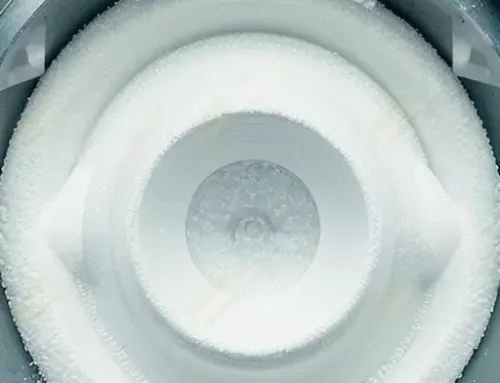In this article, we will cover Nano Measurement Techniques. Nanomaterials offer powerful solutions to address today’s developmental and societal challenges, including health care and rising energy demands. Multiple documents from the European Union (EU) define nanomaterial assessment and research, which complicates identifying a clear research path for evaluating nanoparticles. Researchers now focus on measuring nanomaterials by specific criteria like size, shape, and toxicology. These assessments reveal the potential risks nanomaterials pose to humans, animals, and the environment.
How does one define a Nanomaterial?
The European Commission (EC) defines nanomaterials as “natural, incidental, or manufactured materials containing particles, either in an unbound state or as aggregates or agglomerates, where 50% or more of the particles in the number size distribution have at least one external dimension between 1 – 100 nanometers.”
Nanomaterials differ significantly from bulk materials, requiring inclusion in the REACH regulation requirements. The primary distinction between nanomaterials (NMs) and non-nano materials is the greater specific surface area by volume found in NMs—provided the bulk materials are non-porous.
However, porous bulk materials in the micrometer range can also exhibit high surface areas, though they are not classified as nanomaterials. Due to their altered properties compared to larger particles, nanomaterials require careful consideration in risk assessments. Since nanomaterials are not inherently hazardous, a clear definition is essential for their identification.
Nano Measurement Techniques Screening and confirmatory methods
In general, the measurement methods are divided into two methodologies, screening, and confirmatory methods.
In addition, there is a distinction between approaches for general use and non-general use.
Techniques used in screening methods
- Several methods exist that allow for a fast and loose assessment of particle sizes.
- The methods usually do not determine the number-based distribution of the external dimension(s).
- They allow confirming that a material should be classified as a nanomaterial if the measured median diameter is less than 100 nm.
- If the measured median diameter is larger than 100 nm, no conclusion with respect to the EC NM definition can be drawn and confirmatory methods must be used if no further information on the material is available.
Techniques used in confirmatory methods
- Confirmatory methods are used for an in-depth characterization of the particle size distribution of a material.
- They are needed when screening methods cannot be applied or do not provide the necessary results for a reliable classification.
- They should be able to identify and measure constituent particles within aggregates and agglomerates.
- The methods must be capable to deal with non-spherical particles and polydisperse particle size distributions.
- They should provide the number-based particle size distribution as raw data
Delft Solids Solutions’ Nano measurement techniques
Over the past few years, DSS has further specialized its services to focus on nanoparticle research methods that support material registration within the European Union, aligning with European Commission regulations.
We have grouped the essential analysis techniques, including:
The BET method (screening) assesses the monolayer volume through physical gas adsorption at low temperatures. From this, we calculate the Volume Specific Surface Area (VSSA), which can then be translated to the mean equivalent sphere diameter.
Dynamic Light Scattering (DLS) employs photo-correlation spectroscopy, measuring light fluctuations caused by Brownian motion. This method provides the spherical hydrodynamic Particle Size Distribution (PSD).
Scanning Electron Microscopy (SEM) focuses an electron beam on the sample, scanning over a defined area. Images are constructed from electrons emitted by the sample surface, allowing for number-weighted size distributions by individually identifying particles.
Transmission Electron Microscopy (TEM) passes part of the electron beam through a thin specimen, constructing images based on electrons transmitted through the sample. This approach also enables number-weighted size distribution analysis by identifying particles individually.
Our approach
With all key measurement techniques at our disposal, we can effectively deliver optimal nanoparticle research support for our clients. Furthermore, these methods, outlined in the Nanodefine Methods Manual, align directly with the European Commission’s Recommendation on the Concept of Nanomaterials (2011/696/EU).
In addition, our nanoparticle testing services are essential for meeting the stricter REACH registration requirements. However, the extensive documentation on the EC website often complicates defining a clear research path for nanoparticle assessment. Therefore, at Delft Solids Solutions, we aim to simplify this process and stand ready to assist with your nanomaterial testing needs.
Moreover, we recently enhanced our services with a new Disc Centrifuge, the DC24000UHR by CPS Instruments. This device operates on sedimentation principles, whereby larger particles sediment faster than smaller ones. By knowing the particle density and applying centrifugal force, we can then calculate the Stokes equivalent sphere diameter.
We specifically selected this unit for the following specifications
This analytical instrument provides ultra-high resolution and precise particle size distribution calculations. With a functional range from 2 nanometers to 80 microns (depending on sample density), it uniquely addresses multimodal particle distributions and detects even the smallest changes in particle size.
Utilizing Differential Centrifugal Sedimentation (DCS) for particle sizing, the Disc Centrifuge physically separates nanoparticles rather than relying on statistical algorithms. It then analyzes them in real-time as they pass through a light source-detector, enabling comprehensive, high-resolution characterization.





